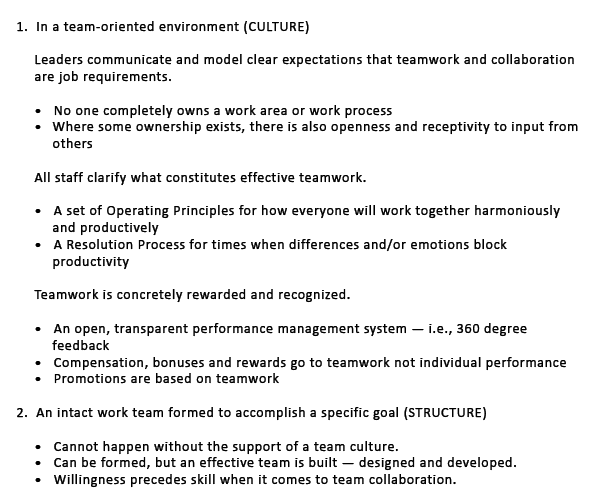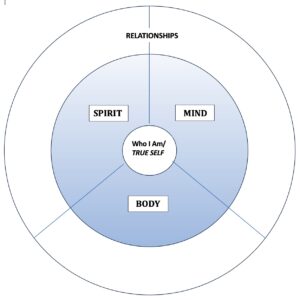Teamwork divides the task and multiplies the success. messages.365greetings.com
Last week’s blog created such a positive response from readers I decided to continue along its theme of workplace wellbeing. Wellbeing, from my perspective, focuses our attention on what we want to create ‘more of’ in our lives. This has required workplaces to undergo a radical transformation given that their focus over the past several decades has been on continuous improvement or eliminating what they want ‘less of’. The new sciences support this paradigm shift in awareness and focus based on a simple proof — where our attention goes, our energy flows. In other words, if we focus on the negative limitations in our lives, we will attract and produce more of the same. Whereas, when we focus on what we want more of and use our strengths to achieve it, we realize positive results.
Martin Seligman, the founder of positive psychology which studies healthy human states such as happiness, strength of character and optimism, tells us there are three different states or drivers of Happiness:
- a pleasant life — having as much positive emotions as you can; learning the skills to enhance pleasure
- an engaged life — absorption in life where time stops; you are in the flow
- a meaningful life — knowing one’s highest strengths and using them in service of a purpose beyond yourself
Seligman further states that the first driver, pleasure, only really matters when you already experience engagement and meaningfulness. No surprise here as the ancient philosophies of yoga and Buddhism make a similar claim — the pursuit of pleasure distracts us from knowing the truth of who we are and from experiencing authentic happiness, that is, joyful peace.
Then, in consideration of contemporary workplaces, it would be fair to say that an organization’s ability to be productive has everything to do with engagement and meaningfulness. Currently, we see these two qualities successfully manifested in workplaces through the use of teamwork cultures and structures. However, even with the proof of documented case studies (Tongal; Zappos; Menlo Innovations) and my own client work over the past 25 years of co-designing team-based organizations, I am not surprised when I read statements such as the one below.
It’s hard to find work places exemplifying a teamwork culture.
In North America, institutions such as schools, family structures,
governments and athletic teams emphasize winning, being the
best and coming out on top.
The Lone Ranger is rewarded — Oprah, Martha Stewart, Steve Jobs.
Workers are rarely raised in environments emphasizing true
teamwork and collaboration.
More recently, organizations are working on valuing diverse
people, ideas, backgrounds and experiences. Nonetheless, we
have a long way to go before valuing teams and teamwork will
be the norm.
Susan M. Heathfield
In fact, I often visit organizations claiming to promote a team-based environment only to discover a group of people housed under the same “roof” who compete rather than collaborate and don’t know what goal they share in common. This simple definition of teamwork — the cooperative effort by members of a group to achieve a common goal — implies at a bare minimum some of what is required. In essence, with this definition we can create one or both of the two types of teamwork — a team-oriented environment or an intact work team formed to accomplish a specific goal.
When I ask friends, family and clients “What do you want more of?”, their typical answer is happiness, not pleasure but authentic happiness or joyful peace. If I follow that question with another, “What brings you joy?”, they frequently answer, “I don’t know.” Well now you do know. Engaging relationships and meaningful contribution bring us joy. More importantly, they release the joy that already exists within us and has been stuffed down for far too long.
In your workplace, what one step toward teamwork can you take to increase your organization’s joy quotient?
Click here to find more Joy Tools.






